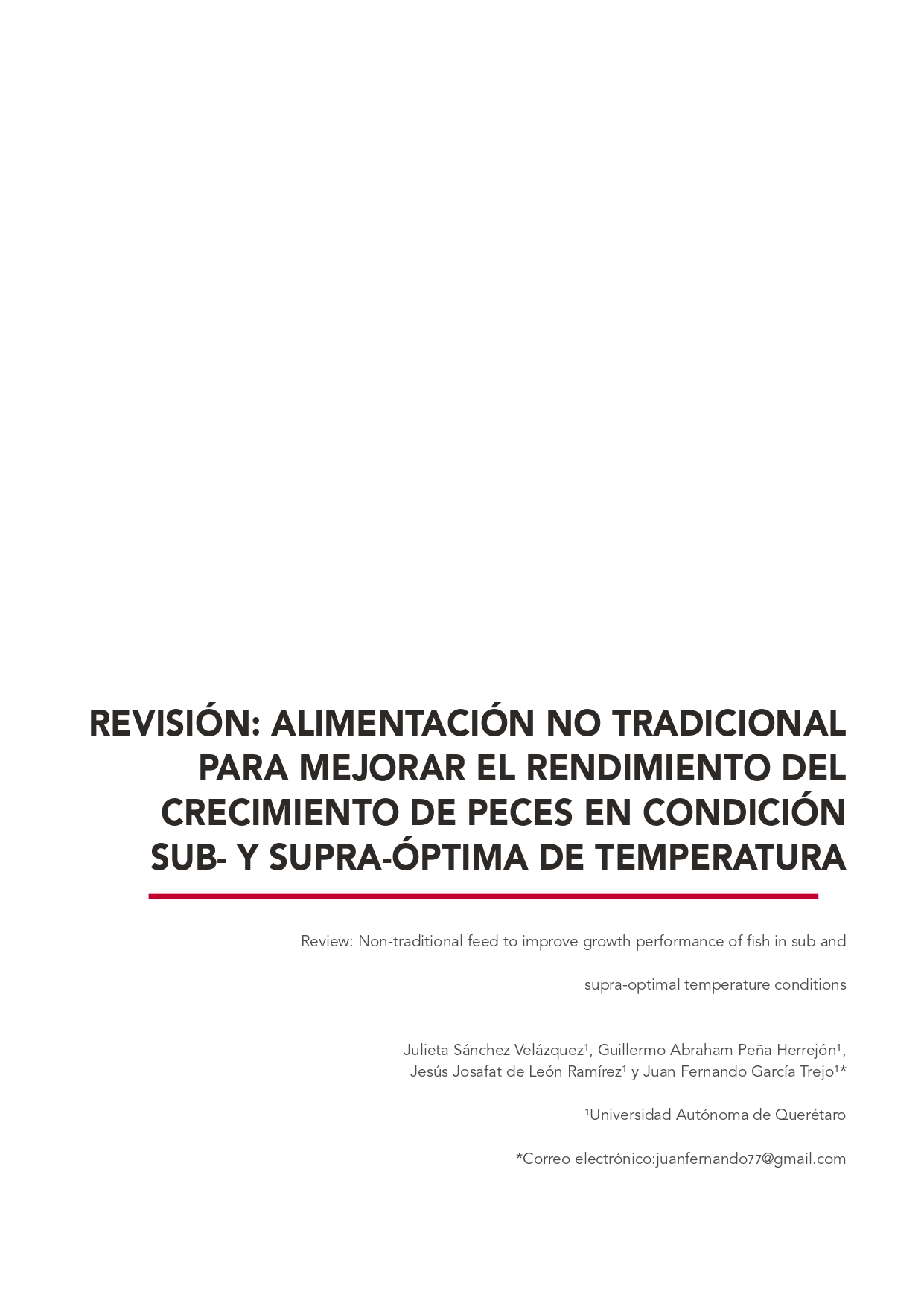Abstract
Fishmeal and fish oil are the main ingredients in traditional fish feeds, but the cost of these raw materials has increased due to the high demand generated by supplying aquaculture production systems. Therefore, it is necessary to replace fishmeal and fish oil partially or totally with new resources, with which new foods can be made and that are named non-traditional foods or alternative foods. Alternative feeds are generally intended to increase growth performance in fish, but such diets have been found to provide health benefits as well. In this sense, non-traditional foods from new sources of protein and fatty acids provide chemical compounds that support the physiological response of fish to stress situations, that is, it allows the fish to face an environmental temperature different from optimum, while growth performance is not affected by said environmental variation. Therefore, in the present work the objective was to review those works in which non-traditional foods were used, with which they obtained a response in growth performance, and in turn a positive effect on the health of the fish. It is concluded that the works obtain results without significant difference with the non-traditional ones that have a composition in amino acids and fatty acids similar to FM and FO since they give the fish the nutrients that allow them not only to increase their growth, in terms instantaneous growth rate or specific growth rate, but can also grow under adverse environmental conditions. The amino acids that worked for the growth and health of the fish are histidine, arginine, leucine, lysine, phenylalanine and valine

This work is licensed under a Creative Commons Attribution-NonCommercial 4.0 International License.
Copyright (c) 2022 Perspectivas de la Ciencia y la Tecnología

